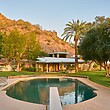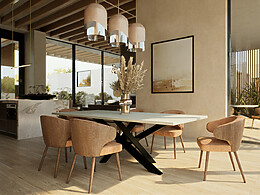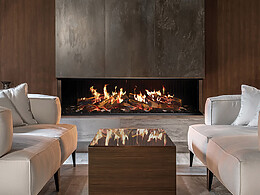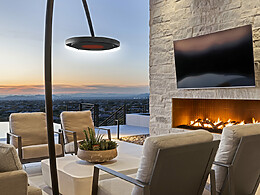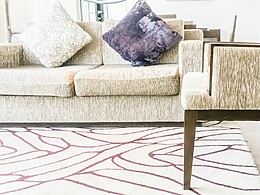
Rachel Elise Trimble of Restyle Junkie empowers locals to take on DIY home projects–and there’s no better time to tackle that cabinet-painting project than now! Here, Trimble names her favorite paint brands, on-trend color choices and fail-safe tips and tricks.
How can one decide if they should take on a DIY cabinet-painting project?
Painting your cabinets is a great option if you have quality wood cabinets, but you’re dreaming of a color update. It’s also a budget-friendly way to remodel your kitchen and bathrooms if you’re happy with your current countertops. Because you can not remove and reuse countertops, you’d have to spring for new ones if you were to change out your cabinets instead of painting. Plus, refinishing cabinets is the perfect way to get a whole new look without the mess and cost of ripping everything out.
There are also things to consider when deciding if you should do it yourself of hire a contractor. First, determine the size of your project. Are you planning on painting a kitchen with more than 40 doors and drawers or are you considering a two door bathroom vanity? There’s a big difference in the time commitment and space needed for painting the cabinets in these two rooms.
Do you have favorite paint brands?
Yes, I have my favorites! Sherwin Williams Pro Classic and their Emerald line work are durable options for cabinets. The key to a gorgeous finish with these paints is not to overwork them. Apply with a brush or roller and move along. These highly engineered paints are specifically made to even out after application, so going back and forth over is not necessary or recommended.
I’m also a huge fan of General Finishes milk paint. It’s a water based American made paint that both professionals and DIY’ers enjoy using. There are a lot of color choices and a little bit goes a long way. Their High Performance Top Coat is my absolute favorite sealer.
The most important things to look for in paint for your cabinets are products that have self leveling properties and that dry really hard. When it comes to paints, you really do get what you pay for.
What products will one need to complete the project?
To paint cabinets properly, you’ll need to supplies that will help you label your cabinets, rags, cleaning solution and sand paper to prep them for primer, paper or plastic and tape to protect your surfaces and walls, paint brushes and rollers and depending on the type of paint you use, a sealer.
There are some products that don’t come to mind initially, but they are helpful. For example, you might want paintable caulk to fill in any gaps. You may need to fill in hardware holes that you won’t be using anymore too. My favorite product for filling in holes you’re not going to reuse is Bondo body filler. It’s supposed to be for cars, but it works well on cabinets too!
It sounds like a lot, but you may find that you already some of the supplies around your house. Otherwise it’s easy to find most of the supplies you need in the paint aisle of a hardware store or a paint store like Sherwin Williams.
Are there certain colors or trends you are seeing in cabinets/kitchens?
White and off white is still a very hot color choice. Espresso and other dark colors are trending too. Blacks, grays and dark blues are popular for kitchens and especially on kitchen islands.
You do not need to paint all of the cabinets in the house the same color!
Do cabinets located in different parts of the house have different needs (kitchen v. bathroom, for instance)?
There isn’t a difference in the way that cabinets should be painted whether they are in a kitchen or bathroom. If you are painting your own cabinets, a bathroom is a great place to start. Small enough to paint in a weekend and perfect for testing the waters to see if you’re ready for your kitchen.
I am seeing crown molding being added to upper cabinets that don’t reach the ceiling in both kitchens and laundry rooms. It’s a good idea to add hardware to all painted cabinets too. Hardware keeps lotions and oils from your hands off of the cabinets and adds style. I always say the hardware is like jewelry for your cabinets.
How does one prep the cabinets?
Prepping cabinets before they are refinished is important! You’ll want to label all of your doors and doors before you stack them up. Hinges should also be put into a plastic baggie and labeled so that they go back to the original spot as well. Plan on using the same process for your doors and drawers on the cabinet frames and the fake wood stickers sides that some kitchens and bathrooms have on them.
Basically, you’ll need to degrease and clean, lightly sand, and then clean again. I like to degrease cabinets with a 50/50 mixture of denatured alcohol and water. A fine Scotch Brite pad works well for cleaning, but be sure to stay with the grain. A clean, non-shedding rag should be used to wipe the cabinets down. When it comes to sanding, I like to use 220 grit sandpaper. You can hand sand or use an electric sander. Again, stay with the grain and if using an orbital sander, do not push too hard or you will get those dreaded swirl marks.
Now is the time to caulk any gaps and fill in any hardware holes that you won’t be reusing. Oh, and don’t forget to take off the bumpers and all of the sticky residue they leave behind.
What are your tips for the actual painting of the cabinets?
Make sure you are working in a clean and cool workspace. If it’s too cold the paint won’t flow out the way it should and if it’s too hot than the paint will dry too fast. Personally, I think it’s best to paint inside your house if possible. When outside, you learn that there are a lot of floating things that can land in your paint including palo verde droppings and flies.
I like to line the plastic paint tray with tin foil for easy clean up. You can cut in with a regular or foam brush to the hard to reach places first. Be sure to follow up immediately with more paint so you do not get ridges. My favorite way to teach DIY’ers to paint their cabinets is with a microfiber roller. It is a fast and simple way to apply paint evenly.
I tell all of my students that it’s called a roller and not a slider. If you grip the roller frame too tightly and push down too hard it will slide and leave streak marks on your cabinets. When you have a gentle grip on the roller frame it rolls beautifully. Don’t worry about how it initially may look bumpy. Great paint will start to level out on it’s own and become smooth. If you have trouble getting every nook and cranny you can use a little artist brush.
How does one know the cabinet doors are ready to be re-attached?
Always pay attention to the dry times on the can of your paint. Your painted cabinets and frames will feel dry to the touch relatively quickly. It’s best to let them dry at least overnight before rehanging. Remember, that while they feel dry, they are typically still curing during the first 30 days. Be extra gentle to your freshly painting cabinets while the paint is solidifying.
How does one take care of their newly painting cabinets?
You definitely do not want to use any chemicals on your cabinets. A soft rag or paper towel damp with water should be more than enough to clean up any mess. The key is not to let anything cake on to your cabinets. Wipe off any spills at quickly as possible.
To learn more, or get a quote for your cabinets you can visit my website at www.restylejunkie.com or follow me on social media at facebook.com/restylejunkie and Instagram.com/restyle.junkie





